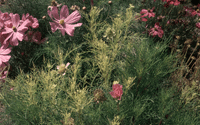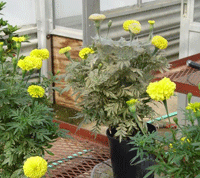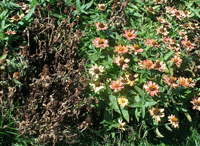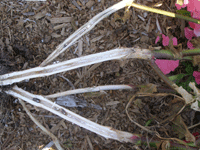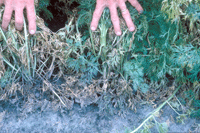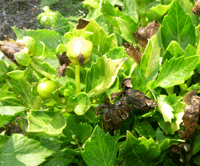Extension > Garden > Diagnose a problem > What's wrong with my plant? > Annuals and Perennials > Cosmos > Discolored leaves
Cosmos > Leaves > Discolored leaves
1 of 4
Aster Yellows
Phytoplasma
- Part or all of the leaves may turn yellow
- Flowers fail to develop, remain small green and may be distorted
- Clumps of weak shoots known as witches broom develop throughout the plant or on flower stalks
- More information on aster yellows
2 of 4
Spider Mites
Tetranychus urticae
- Active during summer, particularly abundant during hot, dry weather
- Pale stippling appears on the upper leaf surface
- Leaves are discolored off green to whitish, yellowish, or bronze
- Premature leaf drop can occur
- Visible webbing occurs on infected leaves when populations are high
- Adults are tiny (1/50th inch long) and oval, greenish or yellowish with a dark spot on either side of the body
- More information on spider mites
3 of 4
White Mold
Sclerotinia sclerotiorum
- Entire plant or single branch wilts, leaves turn brown and die
- Wilted stems are discolored, tan to off-white
- Fluffy, white cotton-like fungal growth may been seen on infected plants when humidity is high
- Black hard spheres ranging in size from 1/16 to 1/2 inch can be found clinging to the outside an infected stem or embedded inside the dead stem
- Entire plant or single branch wilts, leaves turn brown and die
- More information on white mold
4 of 4
Gray Mold
Botrytis cinerea
- Brown blossoms or petals; flowers drop off prematurely
- Leaves may turn completely brown and rotted
- Gray fuzzy mold develops on rotted tissue under humid conditions
- Disease develops during cool, wet weather
- More information on gray mold



